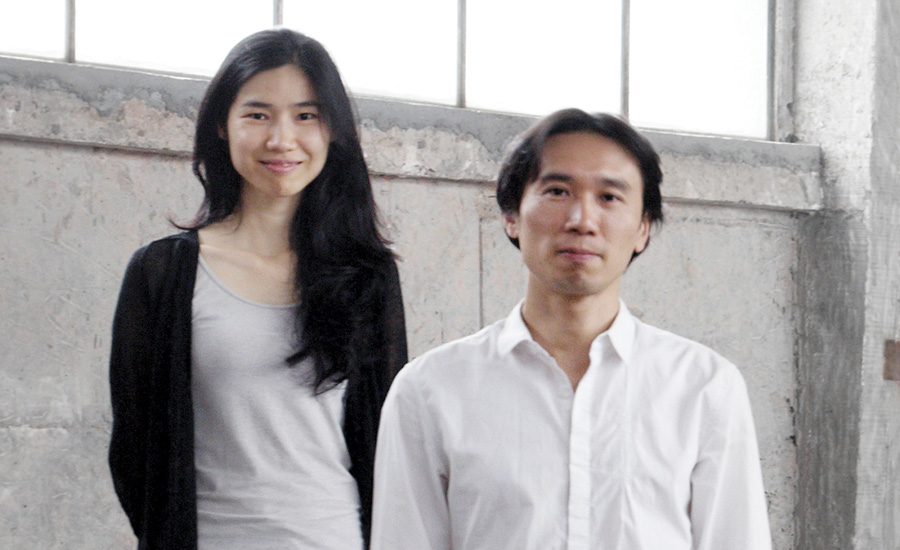O-office Architects uses a old factory of packing to build a opened gallery to the landscape surrounding. The intervention was limited to a black steel box, raised, to take advantage of the skylight of the former factory liberating on this way the ground floor to connect it later with the environment. Several ramps connect the building with a suburban road.
Description of project by O-office Architects
Formerly the packing workshop of Honghua Dying Factory, MJH Gallery was conceptualized from (re-)structuring the spatial narratives of this vacant building. The new architectonics was independently implanted onto the original inner ground of the old workshop, which was regarded as a large open concrete pavilion, in order to build the new multi-layered spatial/time logic into the industrial relic.
The inner core space of the gallery, the main exhibition hall, is lifted up in a black steel box in the center of the old building, under its special double-roof skylight, which gives gentle diffused top-light to the exhibition space. The enclosed exhibition box connects to the ground floor via two semi-glass halls. Several free-standing functional blocks, on the one hand, support the elevated main hall, and on the other, define the ground space and functions that contain an entry show room, an auditorium, an art shop and related divide-able multifunctional spaces. The ground floor is open in all direction to the original ground of the factory, as well as to the surrounding natural landscape.
The main entrance of the gallery, with a half-open T-shape concrete box plugged-in, uses the original entrance on the south gable of the workshop, confronting a landscape pool that converted from the abandoned filtering basin of the factory. A sequence of landscaping walls, pedestrian and vehicle ramps cultivated from the topography were designed to link the gallery’s main entrance to the lower plaza that connects the suburban road. This landscape path from the plaza to the gallery detours between nature and artefacts, industrial and post-industrial landscape, through which, one could experience and memorize the whole time line of the site’s history.
Texto.- O-office Architects.
CREDITS. TECHNICAL SHEET.-
Architect.- O-office Architects.
Principal architect.- Jianxiang HE & Ying JIANG.
Design Team.- Jingyu DONG, Thomas ODORICO, xiaolin CHEN, Guixiong Feng.
Area.- 2,800 sqm.
Completed.- November 2014.
Location.- Kuipeng Road 106, Dapeng New District, Shenzhen, China.















































